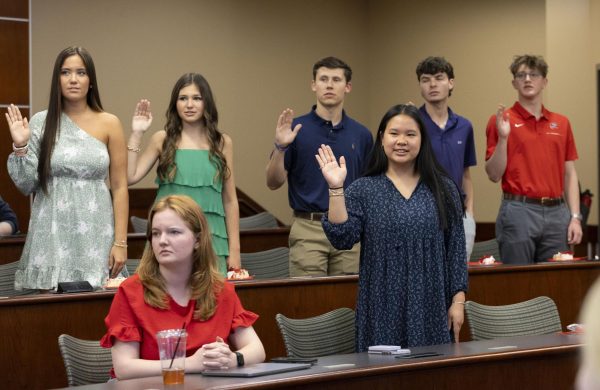Talisman yearbook to cease; magazines to come
March 15, 2016
There are big changes ahead for WKU’s Talisman in the wake of its decision to stop publishing a physical yearbook.
The co-editors of the Talisman, Tanner Cole and Naomi Driessnack, said changes to the format have been considered for the Talisman since the publication’s budget was cut in the 2013-2014 fiscal year by nearly 53 percent.
“When I started, I felt that [the Talisman] was beautiful and appreciated but we were cut anyway,” Driessnack said. “I felt like I was part of a fight for something students cared for.”
According to Talisman staff, the yearbook that usually encompasses fall and spring semester at WKU will be replaced with a magazine that publishes once each semester. There will also be a stronger emphasis on digital content.
“The [Talisman’s] digital presence has been a supplement to the book so far,” Cole said. “The idea is for the long-form journalism in our book to be split between the website and the magazine.”
After the majority of the printing budget for the Talisman was eliminated in cuts, the yearbook remained operational by charging a small fee for each book and through arranged supplements from vice-provost Richard Miller, as well as supplements from Student Publications and the College Heights Herald.
As the staff tried to figure out how to proceed, more bad news arrived for the university. Chuck Clark, director of Student Publications, said it was the announcement of Gov. Matt Bevin’s proposed budget that made the need for a change in format even more dire.
“When we heard what the worst case scenario would look like, we knew the future of the Talisman had to be put on the front burner,”Clark said.
Provost and vice president for Academic Affairs David Lee had granted the Talisman $20,000 of one-time money in December of 2015 to help patch holes in their budget, but with the university as a whole facing financial uncertainty the Talisman couldn’t rely on the extra money to be found every year.
Lee said he had been made aware of the possible change in the Talisman’s format following this edition of the yearbook and seemed hopeful about the change in format.
“That is a decision for the Talisman staff, but it seems like an innovative idea,” Lee said. “A magazine format might be better to appeal to undergraduates in a more significant way.”
Charlotte Turtle, advisor of the Talisman, said the change in format comes as a kind of relief after fighting to create a book without knowing how it will be paid for.
“There were just so many unknowns,” Turtle said. “It’s hard to plan and have a vision for a project this big without knowing what will work for the budget.”
The change in format means the Talisman as a yearbook will leave behind a long and decorated legacy. The first edition of the yearbook was published in 1924, and since its creation, WKU students have captured life on the Hill throughout the years with stories, photographs and design.
The Talisman went on to win 17 Pacemaker awards. The Talisman’s 2015 edition, ‘Resurgence,’ may add another Pacemaker to the list. ‘Resurgence’ was named a finalist for the national Pacemaker Award and a winner will be announced in October 2016. It will most likely be the Talisman’s last finalist entry for yearbooks.
“We will no longer qualify for the Pacemaker awards we usually compete for,” Cole said. “The new Talisman could qualify for magazine Pacemaker awards.”
In 2015, the Talisman pushed beyond a traditional print publication. The Talisman’s website launched and a new era of the Talisman began.
With the impending budget cuts, the Talisman’s emphasis on digital will grow and the upcoming staff of the Talisman will be tasked with a new set of challenges.
“The upcoming leaders will mostly control what the Talisman will look like,” Cole said. “For now, we are trying to provide a safe learning environment and produce one last great book.”
The Talisman editors aren’t worried about the staffs ability to adapt to the new format. They are confident that the traditions of the Talisman will live on with the publication’s new iteration.
“It’s not going to be a chronological record anymore. There won’t be a new book on the shelf,” Driessnack said. “The important stories on campus are still going to be told.”





















![Students cheer for Senator at Large Jaden Marshall after being announced as the Intercultural Student Engagement Center Senator for the 24th Senate on Wednesday, April 17 in the Senate Chamber in DSU. Ive done everything in my power, Ive said it 100 times, to be for the students, Marshall said. So, not only to win, but to hear that reaction for me by the other students is just something that shows people actually care about me [and] really support me.](https://wkuherald.com/wp-content/uploads/2024/04/jadenmarshall-600x422.jpg)

